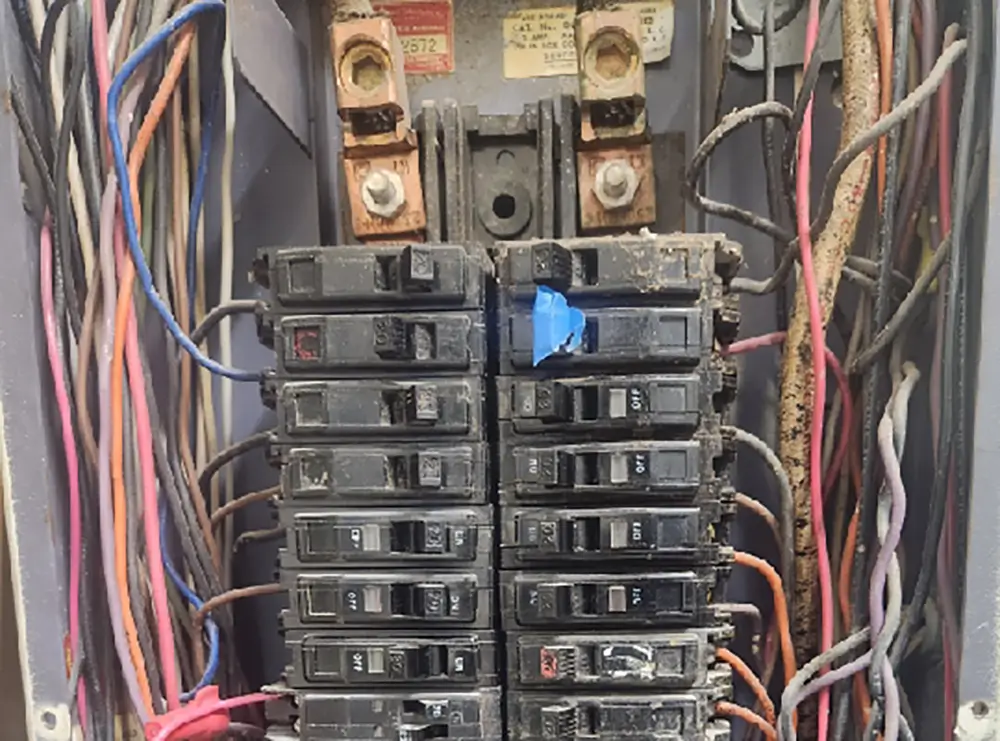
From smart home tech to EV chargers and air fryers, modern homes rely on more electricity than ever before. But if your electrical panel is outdated, underpowered, or just plain worn out, it might not be up to the job. That can lead to flickering lights, tripping breakers—or even serious safety hazards.
At Number One , we’ve seen firsthand how an electrical panel upgrade can protect your home, extend the life of your appliances, and prepare you for future tech. We sat down with Master Electrician Vinny Palmeri to get his expert take on what homeowners need to know.
Your electrical panel is the brain of your home’s electrical system. It receives power from the utility company and distributes it through branch circuits to your outlets, lights, and appliances.
“It’s the main distribution point of all your branch circuiting,” Vinny says. “How much amperage you need depends on your home’s size and electrical demands.”
If your home still uses a round meter can outside with no panel nearby, that’s another red flag. “You probably have a system that’s really ready for an upgrade,” Vinny warns.
Modern electronics and appliances are more sensitive to power issues than ever before. An old panel with loose breakers, corroded contacts, or outdated grounding can cause:
“Loose connections create heat, and heat is loss,” Vinny explains. “Loss is money.”
If your home was built prior to the 1980s, it likely uses outdated daisy-chained wiring—where one outlet carries the load for multiple others. That’s no longer up to code.
Vinny recommends a circuit refresh: inspecting, updating, and pig-tailing outlets so each carries its own load. It’s safer, more reliable, and better for today’s power-hungry devices.
Even with energy-efficient appliances, modern households now have:
“The more we add electric appliances, the more we tax our panels,” says Vinny. “And older panels just weren’t designed for this.”
Panel upgrades provide more amperage and better design to accommodate:
Smart panels also give you flexibility to grow and adapt. “You don’t need solar to upgrade,” says Vinny. “But if you’re going electric, you’ll want that extra capacity.”
Modern panels are required to include:
“Outdated panels are a fire hazard,” Vinny cautions. “You might not see it—but we do.”
Even if your system seems fine, Vinny recommends a yearly inspection, especially if your home is 20+ years old, or you’ve recently added new appliances or circuits.
Yes—and they make your home easier to sell. Buyers today want room to grow, and a modern panel means they can add whatever they want later.
“You walk in and see empty spaces on a new panel? That’s a big selling point,” Vinny notes
If your home still has a Federal Pacific or Pushmatic panel, don’t wait. These panels are not only outdated—they’re dangerous. Some insurance companies have even begun denying coverage unless they’re replaced.
Even if you’re not ready for a full service upgrade, Number One offers inspections and partial updates to improve your safety and performance now.
Your home deserves a panel that can power your life safely and efficiently. If it’s been more than 5 years since your last inspection—or you’ve noticed flickering lights, hot breakers, or tripping circuits—it’s time to talk to the pros.
Call Number today to schedule an expert panel inspection or request a quote for a full upgrade.
Look for signs like frequent breaker trips, flickering lights, burn marks, or an old brand like Federal Pacific or Pushmatic.
Yes. Outdated panels can overheat, arc, or fail to trip properly—posing serious fire and safety risks.
Service includes permits, PNM coordination, installation, grounding, and safety inspections.
Yes. Flickering is often due to loose connections, outdated breakers, or overloaded circuits.
Usually, yes. Most homes need a 200 amp panel to safely support EV charging along with other loads.
We recommend annual inspections—especially for homes 20+ years old or with added circuits.
It protects your electronics from voltage spikes and is required by code in all new service upgrades.
Not usually. Number One often performs upgrades with minimal intrusion and same-day power transfer.